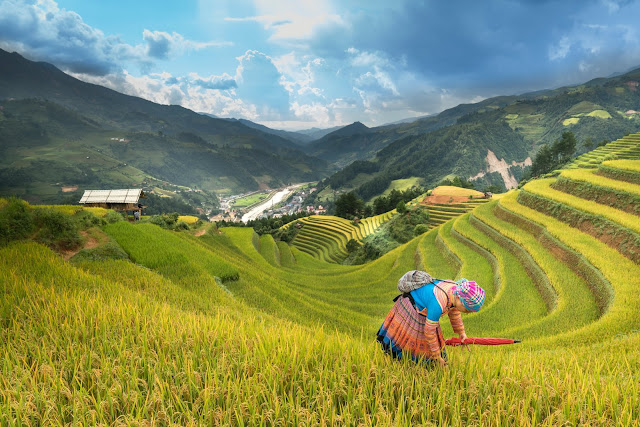藥食同源 Medicine and food share the same origin
古人說『藥食同源』,食物也是藥物。只要用得對,食物就能治病。
這句說話都唔係無道理!
古代人已經認為食療是維持健康的方法。食療中,以主食的『米』為最佳。食療與藥物或藥膳不同之處,在於食療並沒有副作用。
原來我們每天吃的主食,有著這麼不可或缺的作用。
米,除了眾所周知的澱粉質或卡路里外,也有其他的營養,我們做營養師也不知道嗎?
營養師只會叫人控制澱粉質的進食量,怕患病者吃太多澱粉質會影響血糖指數,這是不可置疑的!
咁點解古人說「米」是食療,對健康好呢?
「米」必定含有其他營養,只是我們忽略了。
米所含的貿微量原素及維生素包括:
維生素E
維生素B1
維生素B3
維生素B6
鉀質
鈣質
鎂質
磷質
鐵質
等
The ancients said that "medicine and food share the same origin". Food is also a kind of medicine. If it used correctly, food can cure diseases.
This sentence is not unreasonable!
Ancient people thought that dietotherapy was the way to maintain health. In dietotherapy, rice is the the best and staple food . The difference between dietotherapy and medicine or medicine diet was that dietotherapy had no side effects.
It means that the staple food we eat every day plays such an indispensable role.
Rice, in addition to the well-known starch or calories and has other nutrients, we also don't know even we are nutritionist?
The nutritionist will only ask people to control the amount of starchy food, concerning that too much starchy food will affect the blood glucose index, which is undoubted!
這句說話都唔係無道理!
古代人已經認為食療是維持健康的方法。食療中,以主食的『米』為最佳。食療與藥物或藥膳不同之處,在於食療並沒有副作用。
原來我們每天吃的主食,有著這麼不可或缺的作用。
米,除了眾所周知的澱粉質或卡路里外,也有其他的營養,我們做營養師也不知道嗎?
營養師只會叫人控制澱粉質的進食量,怕患病者吃太多澱粉質會影響血糖指數,這是不可置疑的!
咁點解古人說「米」是食療,對健康好呢?
「米」必定含有其他營養,只是我們忽略了。
米所含的貿微量原素及維生素包括:
維生素E
維生素B1
維生素B3
維生素B6
鉀質
鈣質
鎂質
磷質
鐵質
等
The ancients said that "medicine and food share the same origin". Food is also a kind of medicine. If it used correctly, food can cure diseases.
This sentence is not unreasonable!
Ancient people thought that dietotherapy was the way to maintain health. In dietotherapy, rice is the the best and staple food . The difference between dietotherapy and medicine or medicine diet was that dietotherapy had no side effects.
It means that the staple food we eat every day plays such an indispensable role.
Rice, in addition to the well-known starch or calories and has other nutrients, we also don't know even we are nutritionist?
The nutritionist will only ask people to control the amount of starchy food, concerning that too much starchy food will affect the blood glucose index, which is undoubted!
The ancients said "rice" is dietotherapy. Is it good for health?
Rice must contain other nutrients, but we have ignored them.
The trace elements and vitamins contained in rice include:
Vitamin E
Vitamin B1
Vitamin B3
Vitamin B6
Potassic
calcareous
magnesium
Phosphorus
Iron
etc.
Source:
1. 吃對白米飯的人 不失眠、不發胖、不得三高 - 欒加芹、宮錦汝著
2. 糙米的神奇療效 - 李承翰著
The trace elements and vitamins contained in rice include:
Vitamin E
Vitamin B1
Vitamin B3
Vitamin B6
Potassic
calcareous
magnesium
Phosphorus
Iron
etc.
Source:
1. 吃對白米飯的人 不失眠、不發胖、不得三高 - 欒加芹、宮錦汝著
2. 糙米的神奇療效 - 李承翰著


Comments
Post a Comment